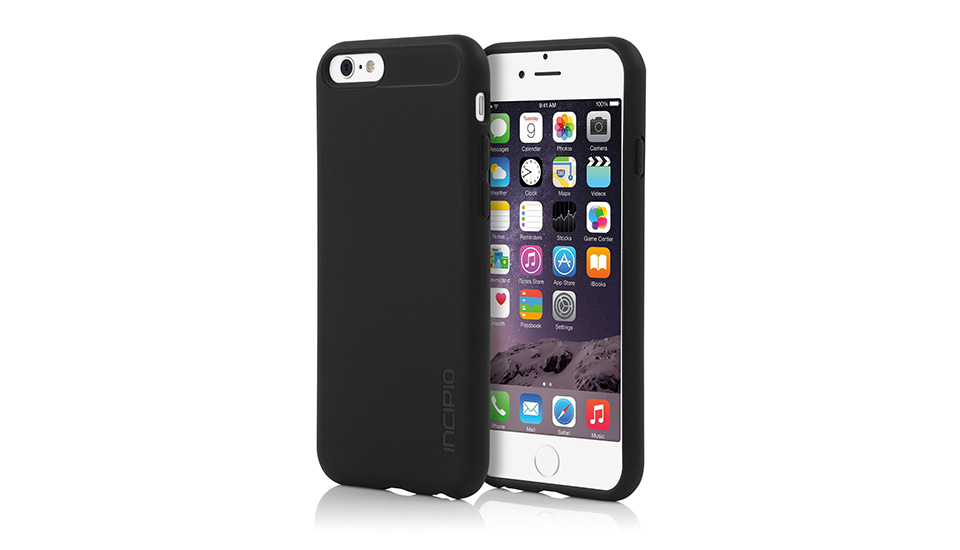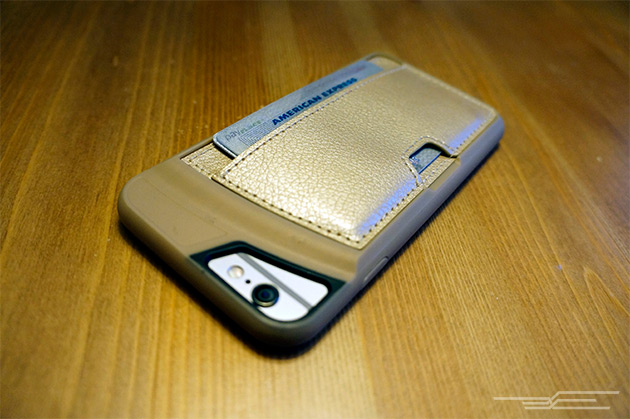
This post was done in partnership with The Wirecutter, a list of the best technology to buy. Read the full article below at TheWirecutter.com.
After surveying almost 1,000 Wirecutter readers and testing close to 100 iPhone 6 and iPhone 6 Plus cases over a period of about 50 hours (so far), our current pick for the best all-around case is the NGP from Incipio. The NGP line has protected several generations of iPhones (and many other devices) and has a reputation for providing solid protection and a good fit at a great price. It’s slim enough not to detract from the iPhone 6’s svelte dimensions while still offering comprehensive protection for the handset’s body, including its buttons. Openings along the bottom allow for compatibility with a wide range of accessories.
How we picked

Our first round of cases for testing. We’ve since tested many, many more.
Truth is, there are plenty of good iPhone cases out there. A bad case is actually a pretty rare thing. But in looking for a few cases that work for most people, we sought out a case that can adequately protect your phone without adding too much bulk or unnecessary embellishment while doing so. Apple sets forth very specific guidelines for case developers, with the main thesis being, “A well-designed case will securely house an Apple device while not interfering with the device’s operation.”
From our perspective, a respectable degree of shock absorption is important, as is a tight fit. The case should cover as much of the iPhone’s body as possible, including a raised lip around the screen to keep the display from getting scratched when laying flat on a surface. The best cases also offer button protection with great tactility, mimicking (or in some instances even enhancing) what you’d feel with a bare iPhone.
Our pick

The NGP from Incipio in translucent teal.
Incipio’s NGP ($10 at street prices) is the best iPhone 6 case for most people because it offers full-body protection against drops and scuffs while adding minimal bulk. Including the protective lip around the screen, the case adds a little more than 2 millimeters to the total thickness of the handset, which is about half the extra thickness of our previous pick, Speck’s CandyShell. While those with butterfingers may benefit from the extra protection provided by the CandyShell’s dual-layer design, the NGP’s slimmer-but-still-shock-absorbent profile offers the best compromise between protection and aesthetics.
The NGP is made out of a single piece of flexible polymer material that the company calls Flex2O. This sounds fancy, but it’s really just a variant of standard thermoplastic polyurethane, which you may know as TPU. But there are a lot of TPU cases that can be had for half as much as the NGP, so why pay extra? It comes down to little things like fit, button feel, and quality control. As with all good cases, port openings are properly aligned and buttons depress readily without requiring noticeably more pressurethe button protection doesn’t dampen the clicking sensation. This is important because even a little unpleasantness adds up to a lot of annoyance when repeated dozens of times each day.
The iPhone 6 Plus edition of the NGP is an equally strong pick.
Flaws but not dealbreakers
There are only two small issues with the case. The first is the height of the screen lip. At 0.6 mm tall, it falls below the 1-mm threshold Apple recommends in its case-developer guide. But we feel it’s enough to still adequately protect the screen.
The other issue is even more of a trifle. A black ring around the camera opening is meant to help prevent color issues when the flash is used for photos. On our first review unit, the paint was slightly unevennot enough to affect pictures, but enough that perfectionists might notice. However, we haven’t seen the same issue on subsequent samples of the case.
Other great cases

The Speck CandyShell offers more protection if you’re prone to drops.
If you’re the type of person who’s always cashing in on AppleCare, we suggest something with more protection, such as Speck’s CandyShell ($35), our previous top pick. The two layers of materialplastic on the outside, rubber on the insideoffer more protection than cases that are just one or the other. At 10.9 mm thick, the CandyShell is on the chunky side, but it doesn’t feel especially thick, and it’s one of the only cases we tested that meets military drop-test standards. A wide range of colors is available, as well as variants with rubbery grips (CandyShell Grip), credit card holders (CandyShell Card), or graphic prints (CandyShell Inked). Unfortunately, the company doesn’t offer the standard CandyShell for the iPhone 6 Plus, but you can get the CandyShell Grip and CandyShell Inked; each is a very good option.
If you’d rather not carry a phone and a wallet, we recommend CM4’s Q Card Case ($40). The body is sturdy rubber and fits securely, protruding in front to form a 0.8-mm screen lip. On the back, there’s a faux-leather pocket that can hold up to three cards, plus some cash. (Without any cards in the Q Card Case’s sleeve, the case is only about a millimeter thicker than the standard CandyShell; its thickness increases with the thickness of each card you add.) While the sleeve can’t hold more than three cards, the growing availability of Apple Pay and other electronic-payment options makes using the Card Case more viable than it was just a year or two ago. Again, there’s an equally strong model for the iPhone 6 Plus.

The Q Card Case can hold up to three cards, replacing the need for a wallet for some.
The problem with many cases is they prevent you from using your phone with dock-cradle speakers and similar accessories. STM’s Harbour ($25) addresses this problem better than any other case thanks to a flip-open bottom. Similar in construction to the CandyShell but costing $10 less, the matte-finish Harbour is smaller in every dimension. There’s a model for the iPhone 6 Plus, too.
The biggest advantage to the Harbour is that flip-open bottom. When closed, the case’s bottom edge has one opening for the phone’s headphone jack and microphone and a second opening for the Lightning-connector port. While these openings are large enough to work with many accessories, you can flip the bottom 1.25 inches of the case up and behind on a rubber hinge, allowing full access to the bottom of the phone for docking or compatibility with larger accessories. It’s a best-of-both-worlds scenario: full protection during normal use and accessory access when you need it. We tested the strength of the hinge by bending it back and forth 250 times, and we saw no wear; we first recommended the Harbour in October 2014, and we’ve received only a single reader complaint about durability with the hinge.
Many cases designed to add minimal bulk also provide minimal protectionthey prevent scratches, but they won’t absorb much of the shock of a drop onto concrete. So we don’t recommend these cases for most people. That said, many people (including a number of Wirecutter editors) want a super-thin case and are willing to sacrifice shock protection for it, so we took a look at some of the better options available. Caudabe’s The Veil comes in versions for iPhone 6 ($15) and iPhone 6 Plus ($16). At only 0.35 mm thick, the plastic case almost disappears when installed on the handset, and it’s the only case of the style we’ve come across to offer a small lip around the screen as well as a raised ridge around the phone’s protruding rear camera for protection.

Apple’s own cases are actually pretty good, especially the Leather option.
We also have an editor’s choice case. Apple’s $45 Leather Case isn’t as protective as our other picks, but we like it anyway. It leaves the bottom edge of your iPhone exposed, and it won’t wear as well (in terms of durability) over time as plastic, but it offers enough coverage to protect the handset from the majority of scuffs and minor drops. And at 9 mm thick, it’s one of the thinner cases around that still has a lip protecting the screen. The iPhone 6 Plus version costs a few dollars more. The lighter color options show dirt sooner than one might like (though one man’s “dirt” is another’s coveted patina, making the case more unique), but it looks and feels great overall, especially in darker colors. It’s like the difference between a hiking boot and a leather dress bootsure the hiking boot is more protective and comfortable, but if you’re not hiking, sometimes it’s worth forgoing a bit of protection and comfort for style and luxury points. Several of our senior editors use Apple’s Leather Case as their day-to-day case.
In closing
There are a lot of good choices when it comes to iPhone 6 and iPhone 6 Plus cases, but the best pick is the NGP. Protective and inexpensive without sacrificing aesthetics, it’s the case to beat going forward. We’ll continue to test it over the long term and see how it fares as newer cases are released.
This guide may have been updated. To see the current recommendation please go to TheWirecutter.com.
Filed under: Cellphones, Peripherals, Mobile
Comments

